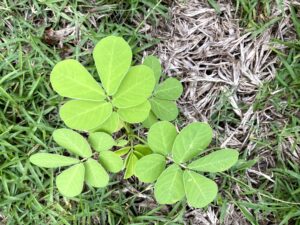Sicklepod – Weed ID Wednesday
go.ncsu.edu/readext?810436
en Español / em Português
El inglés es el idioma de control de esta página. En la medida en que haya algún conflicto entre la traducción al inglés y la traducción, el inglés prevalece.
Al hacer clic en el enlace de traducción se activa un servicio de traducción gratuito para convertir la página al español. Al igual que con cualquier traducción por Internet, la conversión no es sensible al contexto y puede que no traduzca el texto en su significado original. NC State Extension no garantiza la exactitud del texto traducido. Por favor, tenga en cuenta que algunas aplicaciones y/o servicios pueden no funcionar como se espera cuando se traducen.
Português
Inglês é o idioma de controle desta página. Na medida que haja algum conflito entre o texto original em Inglês e a tradução, o Inglês prevalece.
Ao clicar no link de tradução, um serviço gratuito de tradução será ativado para converter a página para o Português. Como em qualquer tradução pela internet, a conversão não é sensivel ao contexto e pode não ocorrer a tradução para o significado orginal. O serviço de Extensão da Carolina do Norte (NC State Extension) não garante a exatidão do texto traduzido. Por favor, observe que algumas funções ou serviços podem não funcionar como esperado após a tradução.
English
English is the controlling language of this page. To the extent there is any conflict between the English text and the translation, English controls.
Clicking on the translation link activates a free translation service to convert the page to Spanish. As with any Internet translation, the conversion is not context-sensitive and may not translate the text to its original meaning. NC State Extension does not guarantee the accuracy of the translated text. Please note that some applications and/or services may not function as expected when translated.
Collapse ▲Sicklepod is a semi-woody annual legume from the pea family. It ranges in height from 1 to 6 ft tall and off of the main stem are leaves made up of egg-like shaped leaflets in sets of 4 to 6. The leaflets closest to the main stem will be the smallest in size and will increase as they get further from the main stem. While sicklepod is considered a legume, it does not fix nitrogen. Coffee senna is a similar-looking plant that could be confused with sicklepod. Look at the end of the leaves – if you see a rounded end, it is sicklepod- if pointed, it’s coffee senna.
All parts of the plant at all stages of growth are toxic to livestock, whether the sicklepod is green or dry. Toxicity concerns revolve around amount of consumption, so it is always important to make sure animals have enough desirable forages to eat. Sicklepod has been shown to respond well to herbicide applications when young, small, and tender. Be sure to read the label in full of any product you choose to use. Mowing may increase spread of seed. Research in Tennessee indicates that sicklepod can lose some of its competitive edge when shaded out by other plants, which in a pasture or hayfield would be desirable grasses or forages.
Read more about sicklepod at the University of Tennessee Extension and the University of Florida.
When thinking about growing the most competitive forage you can to help with weed control- ask yourself these questions to start:
- Have you taken a soil sample in the last three years?
- If you have taken a soil sample recently, did you apply lime and fertilizer per those recommendations?
- What measures do you take to ensure that your pasture is not overgrazed?
- What is your stocking rate? (# of animals per acre)
- Do you rotate pastures?
- How short is your grass when you rotate?
These questions are a great starting point for re-evaluating your management plan for your pastures. Reach out to your local extension agent to continue this conversation.





